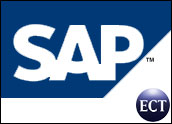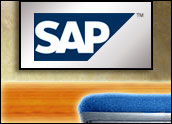
German software giant SAP said Thursday its net profit rose 43 percent in the second quarter on higher U.S. revenues and better margins. The company reported net income of US$519 million, or $1.69 a share, compared with $366 million or $1.18 in the same quarter last year.
SAP had already reported last week that software license revenues rose 8 percent to $777 million — far below analysts’ expectations — amid weakness in Europe and Asia and as competition heats up with rivals Oracle and Microsoft.
Overall revenue rose 9 percent to $2.75 billion from $2.53 billion last year. SAP’s shares dropped $1.47, or 3.19 percent, to $44.68 in afternoon trading.
“At the beginning of the year, we stated that 2006 would be a cornerstone year for SAP distinguished by a series of new product launches,” CEO Henning Kagermann said. “We successfully delivered in the first half with new product launches such as SAP CRM on-demand solutions, Duet software and our flagship mySAP ERP 2005, the first services-enabled ERP suite in the industry. Customer feedback has been very positive on these products, including strong interest from our user groups about migrating to mySAP ERP 2005.”
Future Growth
The software license revenue is most indicative of SAP’s ongoing dominance in the enterprise resource software market. Eight percent is higher than the norm for this category, according to Yankee Group analyst Sheryl Kingstone. “They are still performing very well,” she told CRM Buyer.
SAP is benefiting from a number of internal and external developments. It is still receiving mandates from corporate refugees from Oracle’s acquisition sprees, for example. Even though Oracle has not made another major acquisition — it continues to make one-off purchases of small companies — it has not yet fully articulated its product path, Kingstone noted. The continuing uncertainty, “is causing some companies to continue to move towards SAP,” she added.
A Focus on CRM
Then there is SAP’s ongoing focus on building out its CRM line of products. Anecdotally at least, it appears as though SAP is increasing its market share — like many suite providers it does not break out CRM or other product line figures.
Still, Kingstone said, it is clear they are experiencing growth. “I know that more companies are short listing them now than they have in the past.”
On Demand
SAP’s movement into the on demand space — launched with much fanfare this year — has not likely had a direct impact on SAP’s earnings. It is too soon to tell, and because it is offered on a subscription model, the on demand product is unlikely to have an impact on SAP’s revenue stream even in the medium or long run.
Nonetheless, “CRM is a huge focus for SAP right now,” Kingstone declared.























































